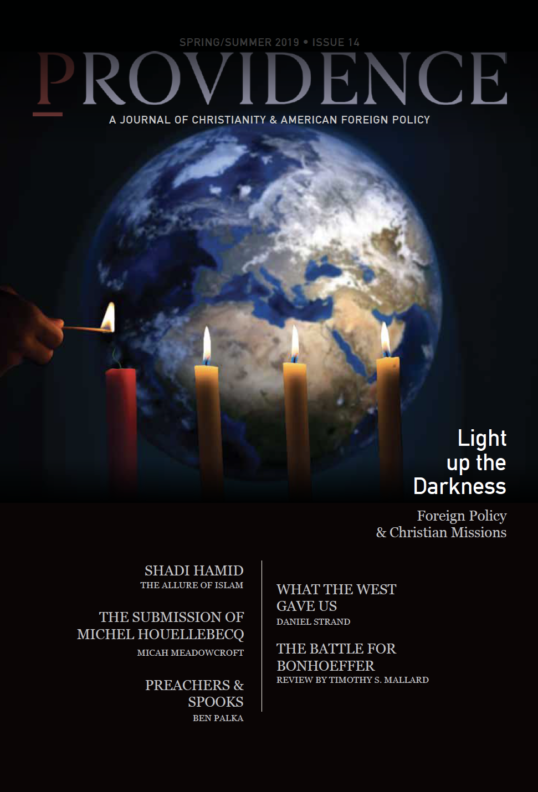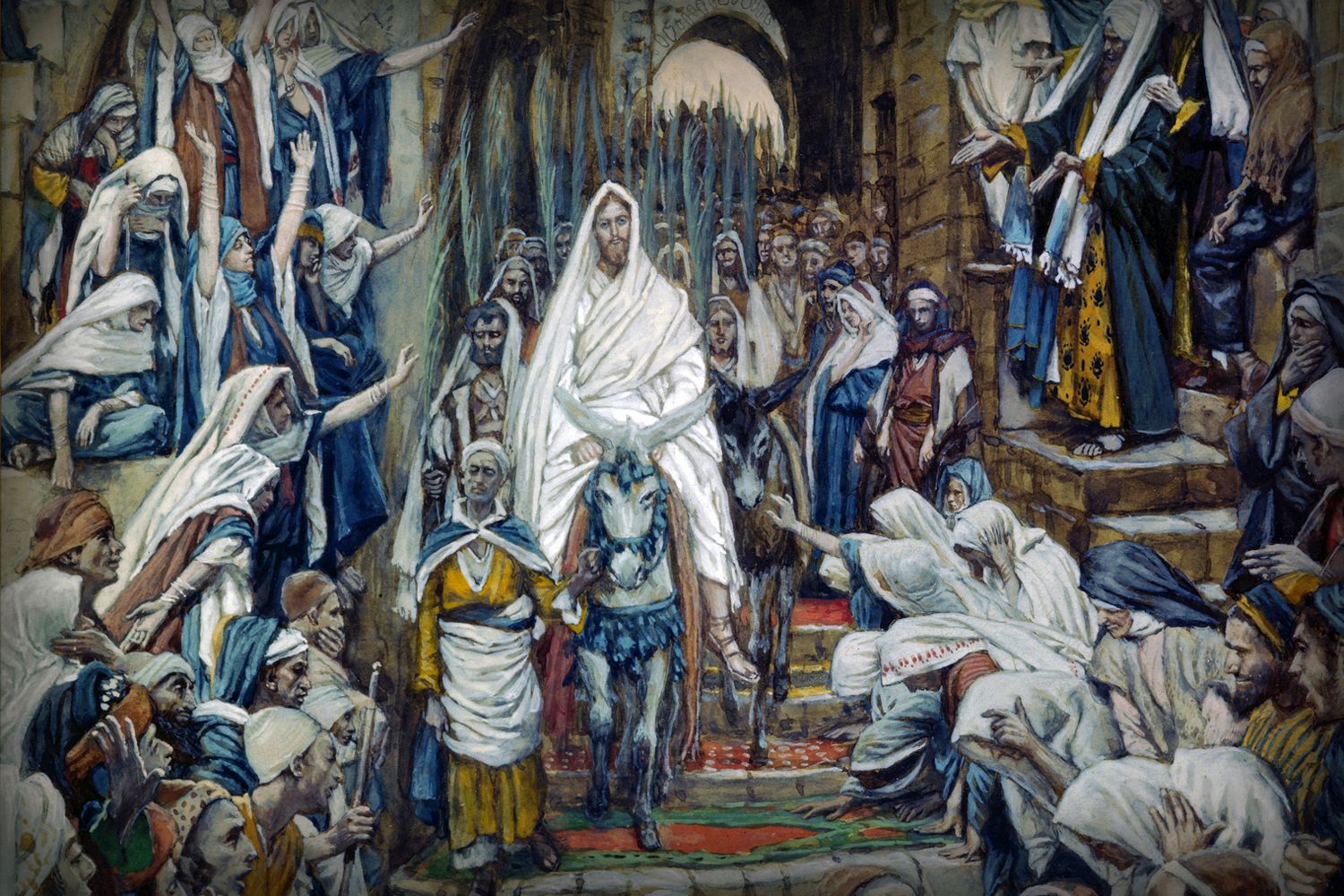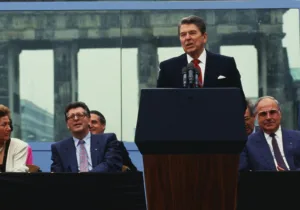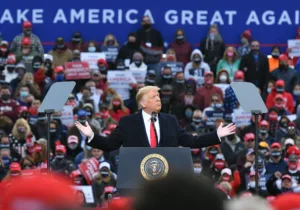To Russians, it was a cause for war; to Americans, a category error. Last October, the Orthodox Christian Ecumenical Patriarch in Istanbul declared the Ukrainian church “autocephalous,” or independent, of Russia. No longer would Ukraine’s 30 million Orthodox faithful defer to Moscow. In response, Russian President Vladimir Putin summoned his national security council to the Kremlin and warned that the decision could lead to a “heavy dispute, even bloodshed.” To stop the church split, he allegedly ordered a cyberattack on the patriarch’s palace. As one advisor argued, Ukraine’s religious rebellion was tantamount “to the collapse of the Soviet Union and the Russian Empire.”
Such saber-rattling about a church administrative dispute is hard to imagine in the United States. Picture the American president summoning the Joint Chiefs of Staff to the White House and deploying troops in response to the recent case of a Texas diocese breaking from the Episcopal Church and aligning with an Anglican bishop in Argentina. It would ostensibly violate our constitutional separation of church and state, and likely be dismissed as political grandstanding.
Politics no doubt plays a role in Putin’s reaction to the Ukrainian church crisis. Over his nearly two-decade reign, he has consolidated power by stoking Russian religious sentiment. He restored the Orthodox Church to its privileged place in Russian society, coopted its hierarchy, and won its endorsement for his foreign adventurism. Patriarch Kirill, the Russian Orthodox Church’s highest authority and a member of Putin’s inner circle, has called his rise “a miracle of God.” As a KGB agent in St. Petersburg, Putin tailed Orthodox clergy. In power, he has used his clandestine knowledge of the sacred institution to further his earthly ambitions.
Spiritual Sources
But it would be a mistake to interpret Putin’s warmongering as mere posturing. His conduct also uncovers a hidden current in Russian history. Like an underground river, the confluence of Orthodoxy and autocracy has irrigated the nation’s development since the baptism of the Rus nearly a millennium ago. Historically, national defense has spurred this merger; to repel invasions from the Mongols to the Nazis, Russian leaders have rallied the nation in the name of defending the faith.
But the symbiosis between crown and cross is more than a marriage of expedience. It also reflects deeply held doctrines of Orthodoxy. In contrast to its Christian siblings, the Eastern Church lacks a coherent just war tradition. Instead, its moral theology encourages an advisory and pastoral role vis-à-vis the state, and its ecclesiology centers around national churches, resisting ecumenism. The unique character of Russia’s state religion not only lends insight into Putin’s conduct on the world stage, but also by comparison highlights the distinguishing aspects of the Western Christian church that lend insight into our own foreign policy.
In his famous “X Article” published in Foreign Affairs in 1947, American diplomat George Kennan examined the “Sources of Soviet Conduct.” He argued that Stalin’s policies were driven by Russia’s historical security challenges as much as by communist ideology, and advocated for a policy of “long-term, patient but firm and vigilant containment,” which many credit for America’s ultimate victory. Putin’s policies demand a similar examination, but one that includes a dimension Kennan largely overlooked and few have fully appreciated—the religious sources of Russian conduct.
From New Rome to the Third Rome
In his analysis, Kennan acknowledged Russians’ “capacity for faith and devotion,” but to truly appreciate its depth, one must turn to Byzantium—the “New Rome” established by Emperor Constantine and claimed by the Orthodox Church as its spiritual center. Modern Russia’s debt to this ancient Christian civilization is reflected in Russia’s official coat of arms, featuring a double-headed eagle. Attributed to an eleventh-century Byzantine emperor, the exotic eagle represented the conjoined institutions of the Orthodox Church and the imperial bureaucracy. Church-state symphonia, as the Byzantines coined it, was a defining feature of the embattled empire and is in part responsible for its remarkable success in surpassing “Old Rome.”
The Byzantines not only successfully defended their empire for a millennium but also evangelized the Slavic world, beginning with the conversion of the Bulgars and eventually the Rus in 998. Unlike the Catholic Church, which enforced the use of Latin and demanded allegiance to the pope, the Orthodox Church permitted more linguistic diversity and political plurality as it spread. The symphonia at the center was severed when the Ottomans conquered Constantinople in 1453, and the ecumenical patriarchy, dependent on the state for its sustenance, was forced into semi-seclusion. Its Slavic spin-offs consequently assumed more autonomy, and eventually Moscow eclipsed Constantinople as de facto custodian of the Eastern rite. By the late nineteenth century, Russian tsars claimed the mantle of “The Third Rome,” succeeding Old and New Rome, and with it responsibility for defending the faithful.
Doctrines of Deference
With this religious legacy, Russia also inherited Orthodoxy’s distinctive eschatology, or view of human destiny. As the body of Christ postlapsarian, meaning “after the fall,” the Orthodox Church’s primary missions are sacramental and pastoral, offering followers spiritual resources to overcome earthly adversity before Christ’s coming again. As such, this Orthodox worldview resembles the Christian realism of Protestant theologian Reinhold Niebuhr, who insisted our aim in a sinful world should be not perfection, but proximate peace and justice.
From Orthodoxy’s eschatology arise two doctrines bearing on questions of war and peace: oekonomie, translated as “economy,” and metanoia, understood as “repentance.” The former speaks to the need to reconcile ideals with reality, compromising laws if necessary to accord with the spirit of God’s commands. Orthodox theologian Georges Florovsky described oekonomie as a “pastoral corrective of the canonical consciousness” emphasizing “working utility.”
Metanoia is similarly postlapsarian and pragmatic. The Orthodox Church views war as an inevitable consequence of man’s fallen nature, and therefore tends to the task of pardoning more than preventing it. St. Basil the Great advised clergy to “allow a pardon” to repentant warfighters, but “refuse them communion for three years, on the ground that they are not clean-handed.” St. John Chrysostom similarly emphasized the personal side of war above the societal one, preaching “when the individual is at war with himself,” it is “the worst of all” wars.
Orthodoxy’s ecclesiology, or church governance, parallels its eschatology in its bow to reality. Whereas the Roman Catholic Church’s history prior to the Reformation was largely centripetal, with authority centralized in the papacy, the Orthodox Church has evolved centrifugally. True to its apostolic roots, its authority is distributed among a plurality of patriarchs. This decentralized structure extended into converted Slavic territories, where church plants were granted autocephaly by the ecumenical patriarch, who himself was merely primus inter pares, or first among equals.
Creed of Resignation
The church’s eschatology and ecclesiology contribute to what historian Richard Pipes has termed Orthodoxy’s “creed of resignation.” In matters of state, the church has deferred to proximate secular authorities; in matters of war, it has sought to remain above the fray. This creed of resignation has fostered an ethic of pragmatism which accounts for the institution’s durability.
But it has also muted the church’s prophetic voice. The reluctance to pass judgment is grounded in an admirable humility, captured in Russian author Fyodor Dostoyevsky’s spiritual saga The Brothers Karamazov: “all the hope and faith of the saints” lies in the realization that “no one can judge a criminal until he recognizes that he is just such a criminal…and perhaps is more than all men to blame for that crime.” In this spirit, and with rare exception, the Orthodox Church has withheld public criticism of its political patrons.
Orthodoxy’s lack of a coherent just war tradition further reflects this uncritical creed. St. Augustine, the tradition’s Latin father, exerts little influence in the Eastern Church. Furthermore, throughout most of its existence, Byzantium’s military posture was defensive, and the just cause for the use of force self-evident. In contrast, the Catholic Church was more expansive, launching crusades in the Levant, the Baltics, and beyond. Western clergy at various times also sought to restrain warring nobles and rampaging conquistadors, especially in the New World. This push and pull necessitated a sophisticated framework for just war deliberation without analog in the Eastern Church. To Orthodox, the only just cause for war is a defensive one; Catholics and Protestants tend toward a more expansive moral imagination.
Without effective supranational authority or a mature means of critiquing military morality, the Orthodox Church has proven vulnerable to jingoism. For example, the Russian Orthodox Church’s catechism accords with Putin’s nationalist project. While committed to serving the cause of world peace, it nonetheless upholds “love of one’s Fatherland,” and praises efforts to “bring the military back to the established Orthodox traditions of service to the Fatherland.” The marriage of fatherland and mother church is sanctified in Russian society to an extent largely absent in the Christian West.
The Middle Matryoshka
This marriage has been consummated in Putin’s foreign policies, which revolve around a religious as well as ethnic and linguistic definition of Russian identity. Some have compared his brand of nationalism to a nested wooden matryoshka doll. Its outermost form is the empire of the tsars and Soviets, encompassing multiple nationalities spanning the continent and united under autocratic rule. Its innermost form is a Slavic, Russian-speaking core centered upon ancient Muscovy. Between these imperial and ethnic layers is the religious form to which Putin appeals, so-called “Holy Rus.” To be Russian is to be Russian Orthodox in this view, and to belong to a religious community which knows no bounds.
The twentieth-century Russian philosopher Ivan Ilyin, a favorite of Putin’s, elaborated upon the concept of Holy Rus. Ilyin channeled the fascism of his day, but with a religious aspect. He portrayed the Russian nation as a suffering savior destined to play a redemptive role in history under the leadership of a singular iconic leader. In 2005, when he reinterred Ilyin’s remains in a Moscow monastery, Putin recovered his mystic philosophy to proclaim “Russia as a spiritual organism [that] served not all the Orthodox nations…but all the nations of the world.”
Defending the Diaspora
Through this prism, Putin’s remark in 2005 that the collapse of the USSR was the “major geopolitical disaster of the century” takes on new significance. Rather than a return to Stalinist-style rule, the ascendant autocrat envisioned a reuniting of Russia’s Orthodox diaspora, one of the world’s largest.
An initial move in this direction was Putin’s success in securing the Act of Canonical Communion in 2007, which reconciled the Russian Orthodox Church with its overseas offshoots exiled during Soviet times. At the historic event celebrating this reunion, Putin proclaimed that Russia’s national revival is “impossible without reliance on the historical and spiritual experience of our people… That is why restoring the unity of the church serves our common goals.”
The shared sense of mission for the Russian church and state partially explains Putin’s incursions in Georgia and Crimea, over tepid objections from Orthodox authorities, as well as his violent reaction to the Ukrainian church rebellion. It also points to potential new ventures. Outside of Russia and Ukraine, the largest minorities of Russian Orthodox faithful are found in Latvia and Kazakhstan. Might the Trump administration’s equivocal support for NATO invite Russian prodding of the Baltic state in the interests of protecting its persecuted Russian Orthodox? Or could the recent retirement of strongman Nursultan Nazarbayev provide Putin the pretext to defend Kazakhstan’s two million stranded faithful? Russian foreign policy is not one dimensionally deterministic; the reasons for Putin’s recent deployment of troops to Venezuela are not religious. But this source of Russian conduct should not be overlooked.
Ecumenical Engagement
To stymie Stalin’s designs, Kennan urged a US policy of containment. To blunt Putin’s, a multifaceted strategy is called for, one that includes religious engagement. Today’s Russian Orthodox hierarchy has pledged allegiance to the Putin regime, aiding and abetting his policies to reconstitute Holy Rus. But some within the institution’s ranks remain loyal to the countervailing vision of “one, holy, catholic and apostolic church” of the Nicene Creed. The international ecumenical movement seeks the realization of this vision.
The Orthodox Church has been active in this movement since its beginnings a century ago; as one of its leaders said, “The Church of Constantinople rung the bell of our assembling.” The World Council of Churches is one avenue for such engagement, but a more ambitious program of educational exchange is needed to reach Russian Orthodoxy’s clergy. During the Nazis’ rise to power, Protestant clergy in the West embraced Germany’s free church leaders; Reinhold Niebuhr, for example, mentored future martyr Dietrich Bonhoeffer during his sabbatical in New York. A similar initiative would represent a worthy new mission field for the wider church today, a show of spiritual soft power to complement the secular hard power of deterrence and defense.
Cannon and Bell
In his classic 1812 Overture, Pyotr Tchaikovsky celebrates Russia’s victory over Napoleon with a dramatic cannonade in the musical score’s crescendo. Behind the thundering cannon fire, one can also discern the unmistakable clamor of church bells. The composer conjures both the cannons of autocracy and bells of Orthodoxy in his symphony to recreate the symphonia to which Russians have historically credited their survival. Although Americans have largely been tone deaf to the harmonization of these melodies, Putin has not, marshaling both church and state to serve his expansive nationalist project. To better grasp Russian conduct, past and present, we would do well to become more attuned to this symphonic sound.
Matt Gobush is a contributing editor to Providence, and previously served on the staff of the National Security Council during the Clinton administration, the House of Representatives Foreign Affairs Committee, and the US Senate. He currently serves on the Standing Commission for World Mission of the Episcopal Church. Matt works in the private sector and lives in Virginia with his wife and five children, adopted from Russia, Ukraine, and Latvia.







